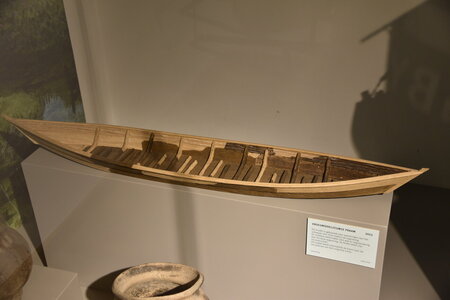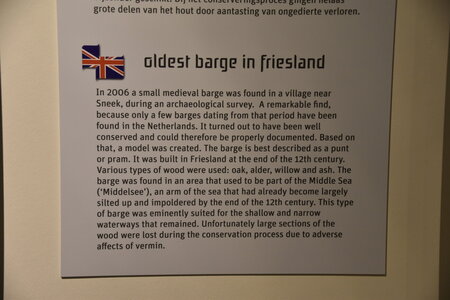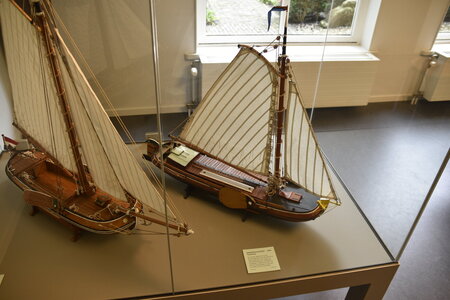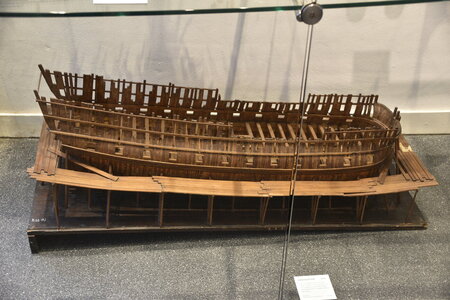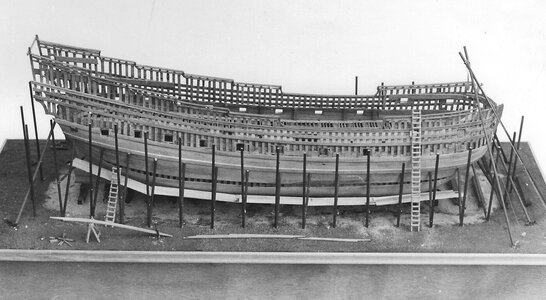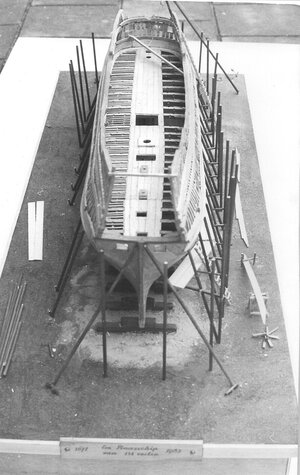Making sloops and boats is mostly a job at the end of a long proces of building a ship model and can be regarded as the cherry on the cake. Some kit makers produce longboats and all kinds of sloops, but for builders of Dutch ships there is nothing on the market (yet). By rare occasion literature offers help here. In his book Aeloude en Hedendaegse Scheepsbouw en Bestier (Ancient and Modern Shipbuilding and Managing) from 1671 Nicolaes Witsen (16342-1717) shows two auxiliary vessels in detail in the Plates LXVI, LXVII and LXVIII. Ships of that era were seldom moored at a quaiside Thyey usually were anchored in a habor or bay, so to reach the land it was necessary to have several means of transport. As a rule any seagoing Dutch ship of that era used two of them.
The 'boot'
The biggest one was a working boat used for transporting cargo, water casks and bringing out the anchors, called 'boot' (pronounce: 'boat'). The length equalled ¼ of the ship measured between stem and stern, so a 120 feet long ship had a 30 feet long boot. It was usually towed behind the ship, but undeer certain conditions it was also possible that it was sailed along with the big ship, using a simple spritsail rig.
Witsen shows the vessel in plate LXVI, writing: 'a boot's side view, a top view and a section':
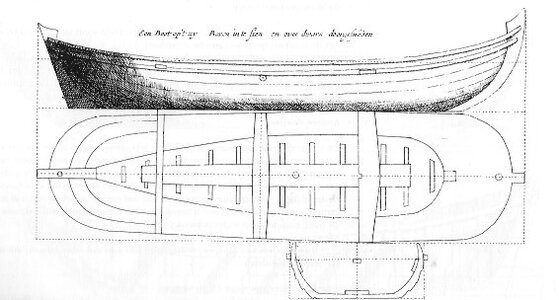
The drawing asks for some explanation, because it is not very detailed. As you can see the bottom is entirely flat and the side planking is klinker built. There are short frame parts nailed onto the bottom, which keeps it together, with curved parts in the sides (here only shown in the section). On top of them a keelson is bolted. Wether or not boards used as a floor on top of the keelson is not shown. There is a mast bench in the fore half with a recess in which the mast fitted if in use. Behind it is a windlass for the anchor. Witsen also draws one narrow bench in the back, but I have seen paintings depicting a boot with a short deck fore and aft.
Min co-operation with my Belgium first hand Rene Hendrickx the Witsen drawings were translated in 3D, using the free downloadable program Delftship.
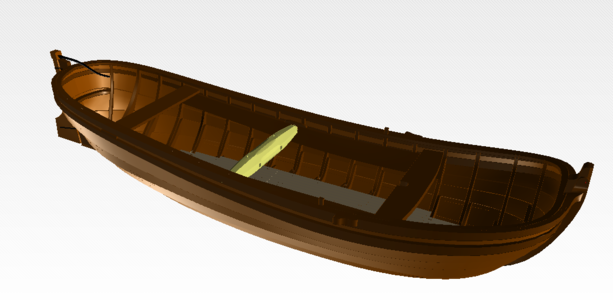
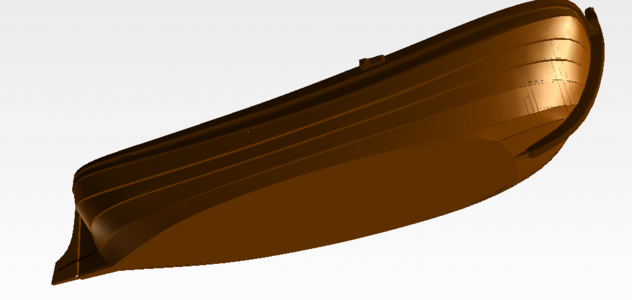
In contemporary paintings we often see the vessels depicted. Here one, even showing a small fore deck:
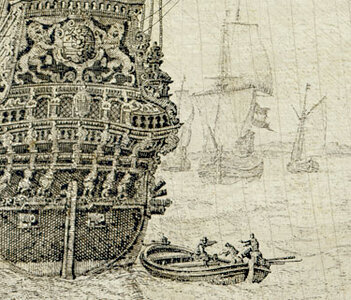
Here a boot with its rig installed on the right side, a sloop to the right. It seems to have a flat tuck, but the effect may be caused by painted decorations:
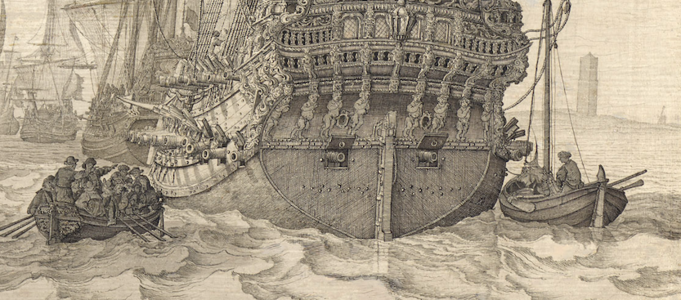
In 1/77 model scale it looks somewhat like this:
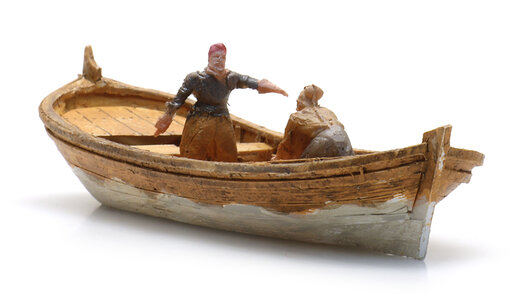
The 'chaloup'
Much better detailed is the picture of the sloop (Plates LXVII and LXVIII), with a side and a top view, a longitudinal section, and two body sections.
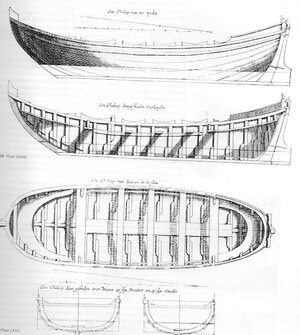
It was called a 'chaloup' (pronounce: sloop) and it was mainly used for transporting people. The length was 4/5 of the boot. Usually it was carried on deck.
The sectional shape of the chaloup is more round, with a carvel bottom and klinker sides. In 3D it looks like this:
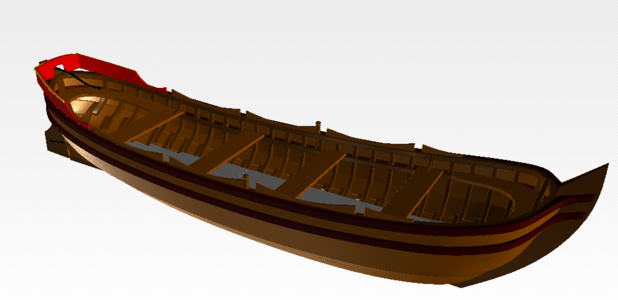
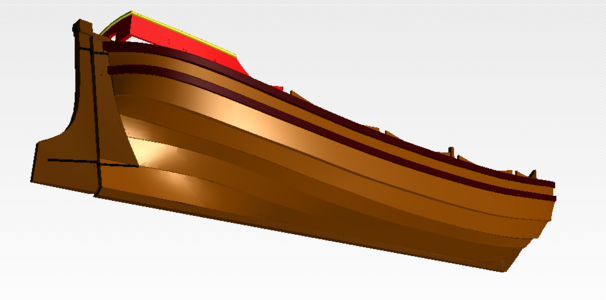
On paintings and drawings, for instance by Willem van de Velde, we see a variety of possibilities for as far as the aft part of the vessel is concerned.
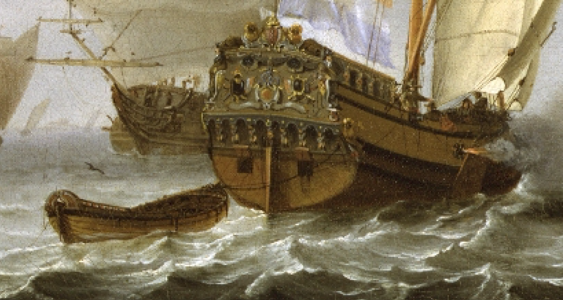
Here the rowers in the middle and fore and aft space for the passengers:
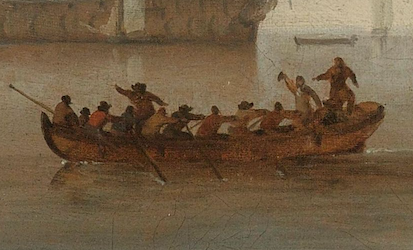
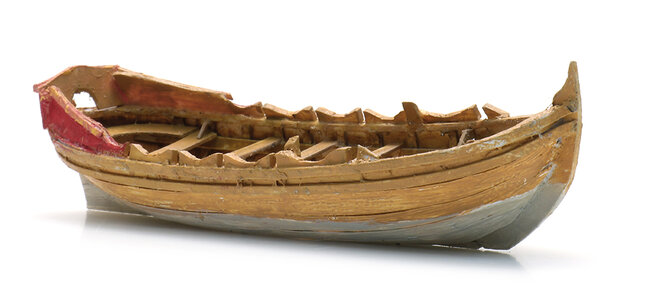
For finishing my latest 'fluit' I produced both vessels in 1/77 scale. They are not finished, the painting should be perfected, but I had to bring the models to the shoot-session with my son.
Anyone who wants the 3D files to study them in Delftship, can send me a message.
The 'boot'
The biggest one was a working boat used for transporting cargo, water casks and bringing out the anchors, called 'boot' (pronounce: 'boat'). The length equalled ¼ of the ship measured between stem and stern, so a 120 feet long ship had a 30 feet long boot. It was usually towed behind the ship, but undeer certain conditions it was also possible that it was sailed along with the big ship, using a simple spritsail rig.
Witsen shows the vessel in plate LXVI, writing: 'a boot's side view, a top view and a section':

The drawing asks for some explanation, because it is not very detailed. As you can see the bottom is entirely flat and the side planking is klinker built. There are short frame parts nailed onto the bottom, which keeps it together, with curved parts in the sides (here only shown in the section). On top of them a keelson is bolted. Wether or not boards used as a floor on top of the keelson is not shown. There is a mast bench in the fore half with a recess in which the mast fitted if in use. Behind it is a windlass for the anchor. Witsen also draws one narrow bench in the back, but I have seen paintings depicting a boot with a short deck fore and aft.
Min co-operation with my Belgium first hand Rene Hendrickx the Witsen drawings were translated in 3D, using the free downloadable program Delftship.


In contemporary paintings we often see the vessels depicted. Here one, even showing a small fore deck:

Here a boot with its rig installed on the right side, a sloop to the right. It seems to have a flat tuck, but the effect may be caused by painted decorations:

In 1/77 model scale it looks somewhat like this:

The 'chaloup'
Much better detailed is the picture of the sloop (Plates LXVII and LXVIII), with a side and a top view, a longitudinal section, and two body sections.

It was called a 'chaloup' (pronounce: sloop) and it was mainly used for transporting people. The length was 4/5 of the boot. Usually it was carried on deck.
The sectional shape of the chaloup is more round, with a carvel bottom and klinker sides. In 3D it looks like this:


On paintings and drawings, for instance by Willem van de Velde, we see a variety of possibilities for as far as the aft part of the vessel is concerned.

Here the rowers in the middle and fore and aft space for the passengers:


For finishing my latest 'fluit' I produced both vessels in 1/77 scale. They are not finished, the painting should be perfected, but I had to bring the models to the shoot-session with my son.
Anyone who wants the 3D files to study them in Delftship, can send me a message.




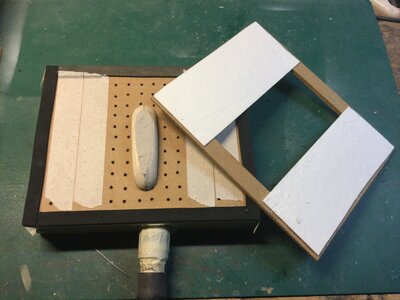

 .
.
